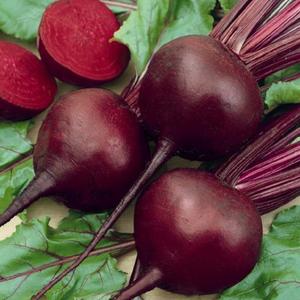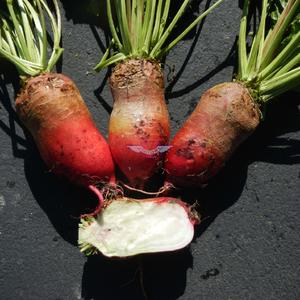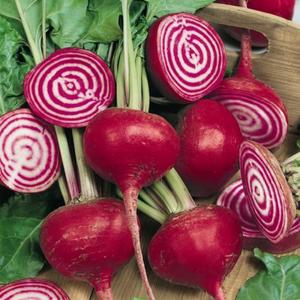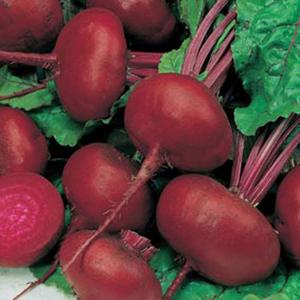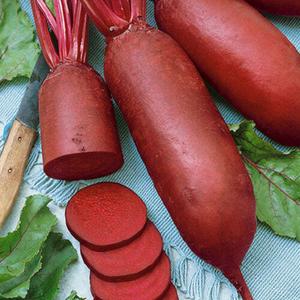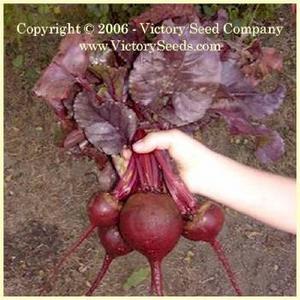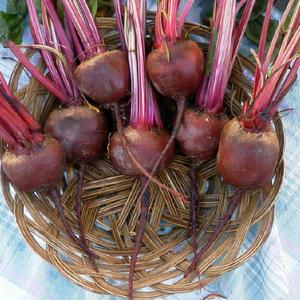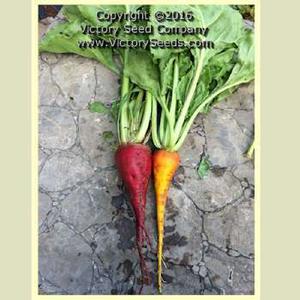Beets
Beta vulgaris
Historically speaking, beets seem to be a relatively new vegetable. With no firm records of their existence prior to the 1600s, what we call a "beet" today was known as a "Blood Turnip" up until the late 1880s. Because the plants have a long taproot, beets like well worked, loam soil. However, if the soil is too rich, you may experience forked roots or plants that quickly bolt (go to seed). Beets tend to toughen as they mature. Table varieties can be eaten raw, canned, pickled, baked or boiled. In locations where the ground does not freeze, beets can be left to over-winter in place in the garden. Mulching with straw can help prevent damage and protect the plants. In the spring, the roots will send up new leafy growth which makes a welcome addition to the table in the form of fresh or cooked greens, but the roots will begin toughening up as the plants begin to go to seed.
Click on a variety's picture for more information.
Unless otherwise noted, each packet contains four grams.
Unless otherwise noted, each packet contains four grams.
10 found
